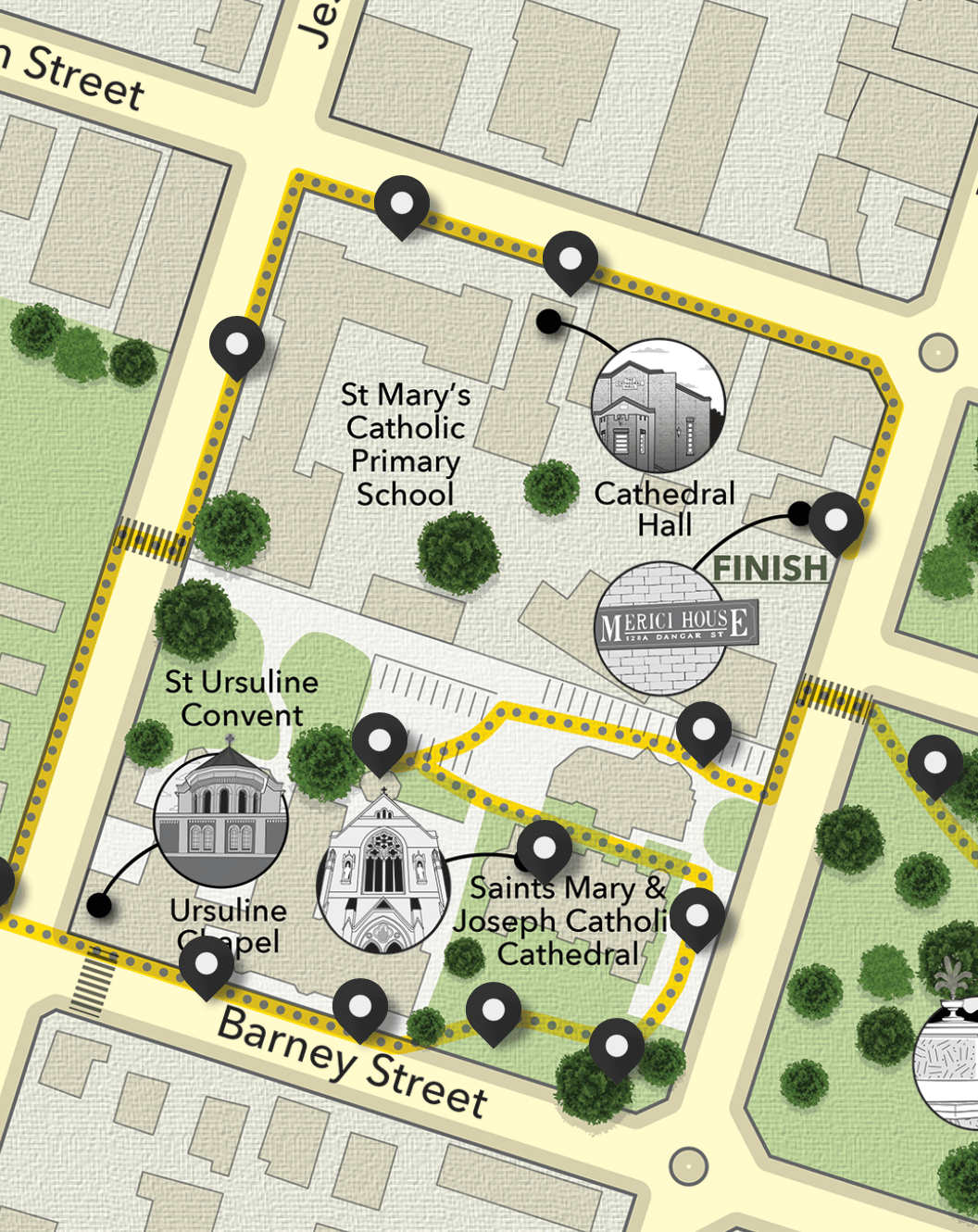
A piece by Lee Herden & Sharon Cook. The Catholic Precinct Soundtrail is a geo locative audio walk and meditation of one of Armidale’s most loved historic sites. This comes to us through the eyes (and ears) of a group of gifted young Aboriginal kids who herald from across the Armidale Catholic diocese, from as
A piece by Lee Herden & Sharon Cook.
The Catholic Precinct Soundtrail is a geo locative audio walk and meditation of one of Armidale’s most loved historic sites. This comes to us through the eyes (and ears) of a group of gifted young Aboriginal kids who herald from across the Armidale Catholic diocese, from as far as Walgett to Tenterfield. These kids (dubbed Wii Gaay kids – Kamilaroi for clever kids) were given fee rein of the place and after figuring out how to use the digital recorders and microphones and the right questions to ask, they went forth: interviewing principles and Fathers and local historians, playing the cathedral organ and opening and closing confessional doors. Starting in Central Park and finishing outside St Mary’s school, this soundtrail takes in 160 years of history, the Bishops, the whispers of confession and the Ursuline convent – formerly an enclosed order. Just as importantly, it attests to the ongoing relationship between the Armidale Catholic diocese, the local Aboriginal families who lived in East Armidale and the broader Armidale community. It mixes voices, prayer, song, story, Gregorian chant and even rap into the recognisable signature of the Soundtrails audio walks. The Catholic Precinct Soundtrail is a feast for the ears. Go forth and discover!
Join an Open walk on the morning of Sunday 1 September 2019.
Credits
Hosted by: Soundtrails (The Story Project ltd)
